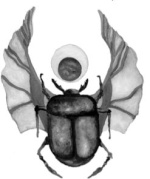Similar topics
"The Vikings' burning question: some decent graveside theatre"
Page 1 of 1
 "The Vikings' burning question: some decent graveside theatre"
"The Vikings' burning question: some decent graveside theatre"
From Times Online:
The average Viking lived a life in which spirituality and thoughts of immortality played a far more important part than the rape and pillage more usually associated with his violent race, according to new research. A study of thousands of excavated Viking graves suggests that rituals were performed at the graveside in which stories about life and death were presented as theatre, with live performances designed to help the passage of the deceased from this world into the next.
Neil Price, Chair of Archaeology at the University of Aberdeen, who will be presenting his findings at a lecture at the university tonight, believes that these rituals may have been the early beginnings of the Norse sagas, which told stories about men and gods in the pagan world. He said that close study of the graves and the artefacts they contained, as well as contemporary accounts of Viking funerals, presented a far more complex picture of their lives than the simple myth of the Viking raider.
Detailed analysis of the burials revealed a remarkable variety of objects found alongside the bodies - from everyday items to great longships, wagons and sledges, together with animals of many different species and even human sacrifices.
Professor Price said: “Close analysis of Viking burials not only gives us an insight into the workings of their minds, but most importantly how slim they perceived the boundaries to be between life and death, and between humans and animals.”
He said that the burial rituals suggested the Vikings had no defined religion, but instead made up a set of spiritual beliefs, which were then acted out at the graveside. These became a form of theatre that predates the sagas and may have contained the origins of Norse mythology - the inspiration for Wagner's operas.
Professor Price said: “There seem to have been something like stage directions dictating how these rituals were to be enacted. Eyewitness accounts suggest that there were as many as ten days of ritual, with enormous time and effort put into the performances.”
The artefacts buried with the dead varied enormously. “No two graves were the same,” he said. Some bore evidence of a military career, with whole ships containing the corpse left open. Other graves were found to have had animal remains - one had no fewer than 20 decapitated horses - and occasionally there were human remains as well. Some Vikings were buried with their wives and families, others were laid to rest in more simple single graves.
Professor Price said: “What emerges from these studies is that these were an immensely sophisticated people, with a complex set of beliefs, and a strong interest in poetry. It was an utterly different world from ours. They were aggressively pagan, and strongly anti-Christian, perhaps as a reaction to the Christian missionaries. But there is great richness in this non-Christian world.”
Most of the existing records on Norse mythology date from the 11th to 18th centuries, having gone through more than two centuries of oral tradition that is thought to carry the seeds of Germanic legends such as the Valkyrie, the Niebelungen and Siegfried. Hundreds of place names in Scandinavia are named after the gods.
“The research focused on the examination of excavated material and Old Norse texts, combined with eyewitness descriptions of Viking burial ceremonies found in contemporary literature,” said Professor Price. “The study demonstrated the significant role that storytelling and dramatisation played in the Viking disposal of the dead. It seems clear that public enactments took place on these occasions, intended to provide the deceased with a poetic passage into the next life.
“The work suggests that Vikings used these funeral stories as a way of connecting the world of the living and the worlds of the dead. It is likely that these dramas, which were created and acted out using objects that were placed with the body in the grave or on the cremation pyre, form the beginnings of what we know today as Norse mythology.”

Khephra- Age : 59
Number of posts : 897
Registration date : 2008-08-10
 Similar topics
Similar topics» "The Big Question: What was the Holy Grail, and why our centuries-old fascination with it?"
» Burning Incense Is Psychoactive
» "The Grand-daddy of all Fake Terror Fall Guys: Guy Fawkes" -
» Burning Incense Is Psychoactive
» "The Grand-daddy of all Fake Terror Fall Guys: Guy Fawkes" -
Page 1 of 1
Permissions in this forum:
You cannot reply to topics in this forum
